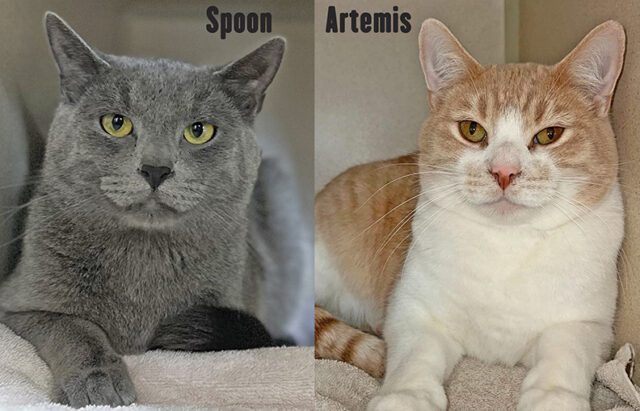
05 Dec Second Chance: Is Rawhide Dangerous?
For 30+ years, the Animal Resource Center and Shops of Second Chance Humane Society have been serving Ouray, San Miguel, and Montrose Counties. Adoption hours are from Wednesday to Sunday, 11 a.m. to 5:30 p.m. View shelter pets and services online at www.secondchancehumane.org.
“Connecting Pets, People, and Community While Saving Lives.”
View shelter pets and services online: www.adoptmountainpets.org.
Please reach out to our dog den staff with any questions about these deserving dogs. animalcare@secondchancehumane.org
Donate here or mail to: PO Box 2096, Ridgway, CO, 81432.
Go here for more options from Second Chance.

During the holidays, stores are filled with pet gifts. Over 70% of dog parents buy gifts for their dogs at Christmas. If you’re shopping for a dog, you will surely see all kinds of rawhide: wrapped into sticks, tied in a bow, twisted like a candy cane, shaped into stockings. There is no limit to the variations.
Rawhide is dried cow or horse hides, cleaned, cut, and pressed into dog chews. To make them more appealing for dogs, some rawhide treats contain beef, chicken, or liver flavorings. All rawhide chews are made from dried animal skins, but their quality and safety may depend upon where they were made. US-made chews tend to be safer, less chemical-laden, and higher quality. They are also harder to find and pricier, but the benefits are worth the cost.
If you decide to offer your dog rawhide, you should do so knowing the dangers. The most common risks include contamination, digestive irritation, choking, and intestinal blockage.
Contamination can occur when rawhide chews contain trace amounts of toxic chemicals, Salmonella or E. coli. Even humans can be at risk when coming into contact with these bacteria on rawhide treats.
Some dogs are simply sensitive or allergic to rawhide or other substances used in their manufacture. This can cause problems, including diarrhea.
Rawhide chews can pose a choking and blockage risk. This is a much bigger risk than contamination or digestive irritation. If your dog swallows large pieces of rawhide, the rawhide can get stuck in the esophagus or other parts of the digestive tract. Depending on its size and where it is located, sometimes, abdominal surgery is needed to remove them from the stomach or intestines. If that is not resolved, a blockage can lead to death.
There has been much talk about the dangers of rawhide. Statistically (given the amount of rawhide consumed by dogs each year), the risks are relatively small. Still, the dangers can be serious, so don’t ignore them. Weigh the risks and benefits of giving rawhides based on your dog’s chewing needs and behaviors and consult with your veterinarian. For dogs that are softer chewers, rawhides are generally considered to be safe treats because these dogs don’t easily break them down into chunks. Always supervise your dog, and take the chew away if they’re breaking it down too fast.
There are alternatives for keeping teeth clean and satisfying your dog’s urge to chew, including hard rubber chews, natural marrow bones, or antlers. Ask your veterinarian or a knowledgeable staff member at your favorite local pet store for suggestions.

Artemis and Spoon are two young male cats who are best friends. They rely on each other a lot, so they need to find a home together.


Sorry, the comment form is closed at this time.